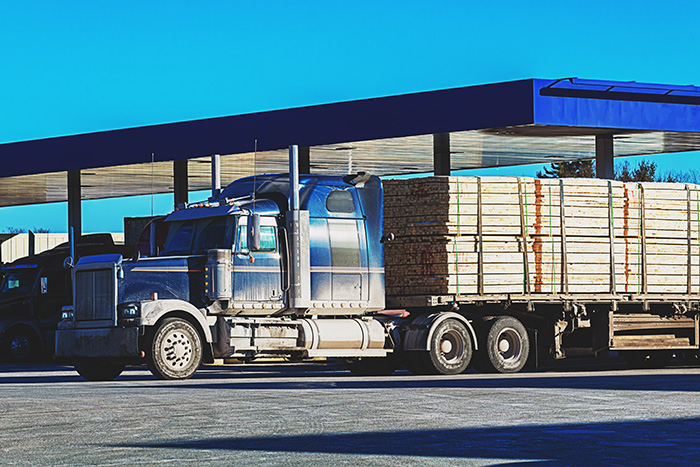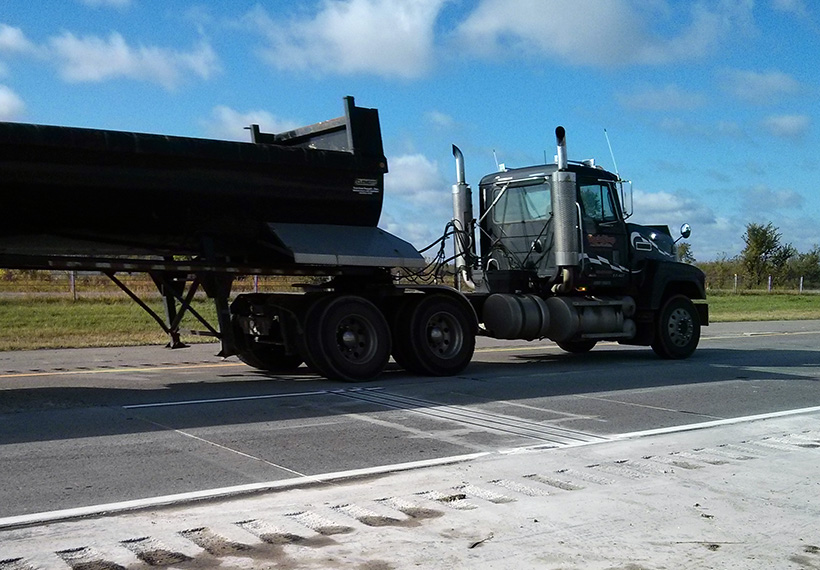The Tire Anomaly and Classification System (TACS) normalizes safety standards across the commercial fleet, regardless of vehicle age.
Catching the unknown and even the unlikely is an important part of an effective safety regime. ‘Wild card’ incidents are by their very nature unpredictable and, potentially, the most damaging. While some incidents, such as a blown tire can be the result of unscrupulous commercial operators consciously scrimping on inspection, at other times even apparently well-maintained vehicles can be the cause of problems.
Many modern vehicles now have comprehensive onboard diagnostic systems that monitor all manner of things — powertrain condition, performance and emissions, but also tire pressures, brake system temperatures, and so on — and make significant, positive contributions to overall standards of vehicle and road safety.
Challenges arise with older commercial vehicles.
Significant numbers of the daily workhorses on our roads are still distinctly analog and offer no opportunity to intervene in their inner workings. Some slightly less antiquated vehicles have plug-in ports to which a dongle can be attached to give some form of remote diagnostic capability. However, there have been some overly human responses to the addition of such technology; where these add-on solutions have been fitted there have been instances of drivers removing them because of ‘spy in the cab’ (actually, under the hood) concerns. Also, while they can help to address powertrain issues, they do nothing to monitor such as tire condition/pressure or brake system performance.

Specialized commercial vehicles often have long service lives
Many older vehicles continue to be used for very good reasons. Particularly in the case of the emergency services or highway maintenance and inspection teams, there are some highly specialized — and expensive — vehicles that remain relatively low-mileage and effectively ‘new’ because they are only used for rare and specific events and tasks. Simply replacing still-pristine assets for the sake of adding onboard diagnostics is a poor use of taxpayers’ money and would be politically unpalatable.
Also, in economically pressing times private-sector organizations will look to utilize their assets for much longer than they otherwise might. That increases the average age of the commercial fleet. Other companies, for branding purposes, make a point of continuing to run classic and vintage models. Then, there are the myriad very small businesses and sole traders for whom using vehicles to end-of-viable-life is their only option — and for whom the formalized inspection routines of a larger business are an alien concept.

Some industries maintain older commercial fleets
All of this adds up to a sizeable fleet for which some form of offboard diagnostic capability is desirable, if not essential, and likely will be for quite some time. For tire condition and monitoring, intervention from the infrastructure side requires an in-pavement solution.
IRD’s Tire Anomaly and Classification System (TACS) screens commercial vehicles at weigh station facilities to identify those vehicles which are unsafe due to missing or under-inflated tires. TACS also supports the real-time screening of commercial vehicles at highway speeds of up to 100 mph. The technology identifies flat, missing, and underinflated tires as well as mismatched diameter tires on dual tire sets — all potentially significant safety problems. TACS flags underinflated tires that could become safety issues in the near future and that are already less efficient. With a messaging/signing system in place, drivers can respond by inflating tires to safe levels to maintain optimal fuel efficiency.

TACS identifies vehicles with unsafe tires for enforcement or notifications
TACS normalizes tire inspection and safety standards across the whole commercial fleet, regardless of vehicle age or condition. It provides an additional check and balance for state-of-the-art vehicles with onboard systems and a useful insight into the activities and diligence of their operators. It also provides a primary source of condition-checking of older vehicles — an important distinction from the infrastructure operator’s and enforcement agency’s perspectives.

Regardless of vehicle age and condition safety standards must be met
An investment in TACS, therefore, provides a safeguard in the face of safety practices and economic outlook. Deployed in combination with well-established weigh-in-motion technologies, it helps to preserve infrastructure integrity and, crucially, to improve safety standards for some of the vehicles which in all senses of the word present the largest safety risks.
The benefit is not just for commercial vehicle operators but for all road users.



